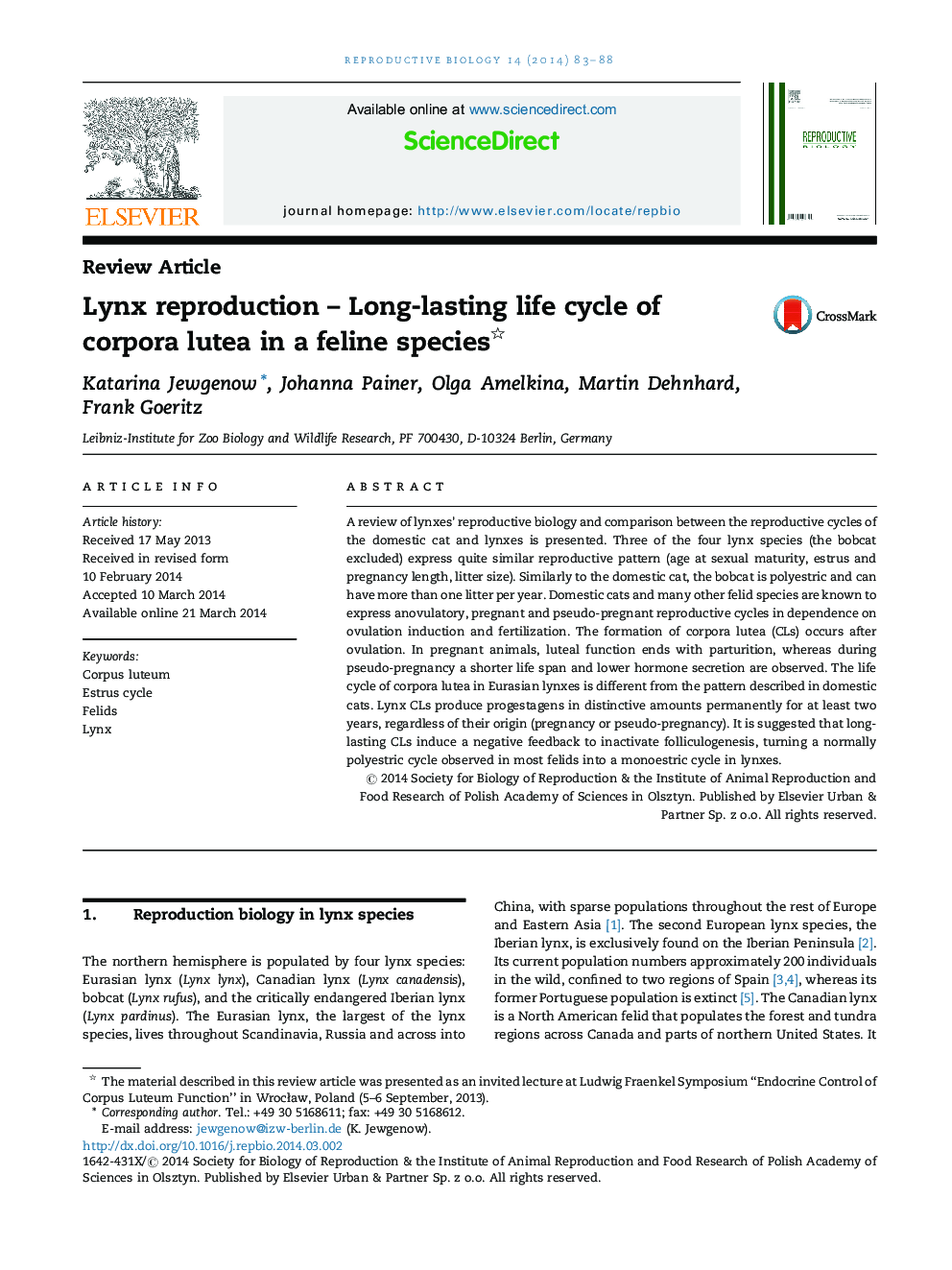| Article ID | Journal | Published Year | Pages | File Type |
|---|---|---|---|---|
| 2062523 | Reproductive Biology | 2014 | 6 Pages |
A review of lynxes’ reproductive biology and comparison between the reproductive cycles of the domestic cat and lynxes is presented. Three of the four lynx species (the bobcat excluded) express quite similar reproductive pattern (age at sexual maturity, estrus and pregnancy length, litter size). Similarly to the domestic cat, the bobcat is polyestric and can have more than one litter per year. Domestic cats and many other felid species are known to express anovulatory, pregnant and pseudo-pregnant reproductive cycles in dependence on ovulation induction and fertilization. The formation of corpora lutea (CLs) occurs after ovulation. In pregnant animals, luteal function ends with parturition, whereas during pseudo-pregnancy a shorter life span and lower hormone secretion are observed. The life cycle of corpora lutea in Eurasian lynxes is different from the pattern described in domestic cats. Lynx CLs produce progestagens in distinctive amounts permanently for at least two years, regardless of their origin (pregnancy or pseudo-pregnancy). It is suggested that long-lasting CLs induce a negative feedback to inactivate folliculogenesis, turning a normally polyestric cycle observed in most felids into a monoestric cycle in lynxes.
